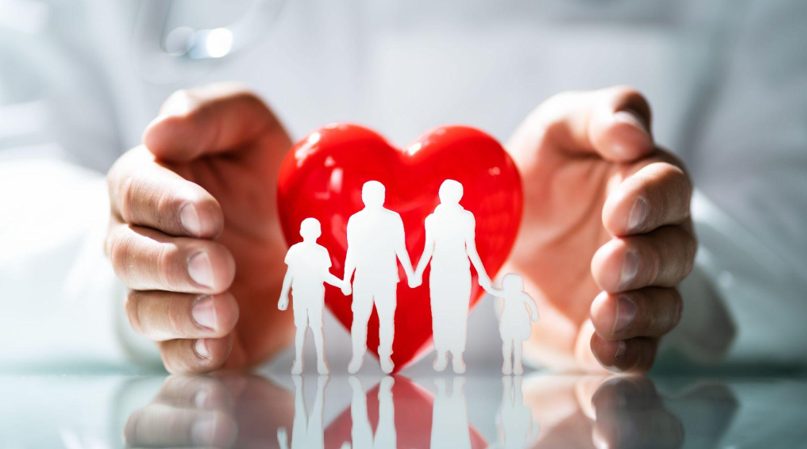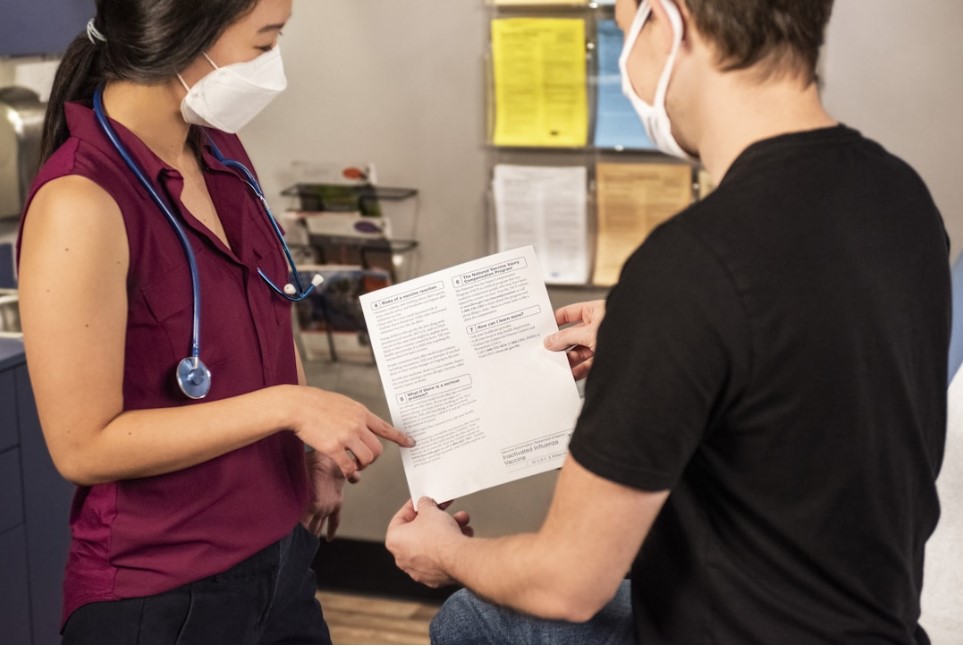Mental health situations can happen to anyone. When you experience something like this, it can be crucial to reach professional help fast to give you the tools or resources you need. For a long time, the United States has worked with the National Suicide Prevention Hotline to provide services like this.
However, the lifeline was severely understaffed and operated through underfunded call centers. The number itself was also harder to remember than something like 911, which you call for all other emergencies.

Recently, the federal government took steps to make reaching critical mental health services easier when you need them the most. On July 16th, the old mental health lifeline number was phased out and replaced with a much easier-to-remember three-digit number, 988.
This number can be used by anyone experiencing a mental health crisis and will serve the purpose of connecting them to a mental health professional instead of an EMT or the police. Let’s dive deeper into everything you need to know about this monumental step towards better mental health care in the United States.
What should I know about 988?
Currently, most people who experience a mental health emergency call 911.
The issue with that is that mental health needs were not considered when 911 was originally created by the government and state officials. Callers either end up in a chaotic emergency room where they must wait for hours or even days to receive care, or they interact with law enforcement, which may result in tragedy or trauma.
Advocates for mental health are hoping that 988 will become a well-known, secure, and permanent substitute for 911 calls that could be directed to a mental health professional.
Many times, when met with law enforcement, those experiencing a mental health crisis are not given the care or attention they need at that moment. This can result in unnecessary violence, arrests, or deaths.
Law enforcement and EMTs usually are not provided with the proper training they would need to handle someone experiencing mental health issues. In these instances, a trained mental health professional must be the one who handles and de-escalates the situation until they can get the person the long-term help they need.
The initiative behind 988 aims to eventually decrease unnecessary run-ins with the law and connect those in need of immediate assistance. It is a part of a bigger plan to increase the number of mental health crisis response teams across the United States.
The concept for 988 has been in development for a while. This number was established by a bipartisan bill that President Donald Trump signed into law in 2020 to address any mental health emergencies.
Who is running and funding the 988 hotline call centers?
When someone struggling makes a call to 988, they will be connected to a certified counselor at a call center that can help them navigate the crisis in many cases. Additional services are also available from 988, including:
- If additional assistance is required, a crisis team made up of mental-health crisis professionals and counselors will be sent out to the location.
- They can also make connections to other mental health services in the area.
- If those measures are ineffective, 988 will also point people in the direction of stabilization facilities, which are mental health facilities with trained staff on hand to monitor patients and offer extra counseling and support, or residential facilities for long-term care.
The 988 hotline is receiving funding via the Biden-Harris administration and has increased the amount designated for the cause by a significant amount (from $24M to $432M). Through an act known as the American Rescue Plan, Congress provides funding for the Department of Health and Human Services and its employees.

Additionally, the lifeline itself, as well as other current federal crisis funding sources, are given more money in the President’s Fiscal Year 2022 budget request.
There is legislation that allows states to utilize new telecommunication fees to assist in funding 988 operations at the state and county levels, well known as the National Suicide Hotline Designation Act of 2020.
Increased funding and the creation of the 988 number are to prevent trips to the emergency room, jail, or, in the worst cases, the morgue if the situation escalates into deadly violence for those experiencing a mental health crisis.
When should you call 988?
The reasons behind the decision to make a call to the 988 hotline can vary in severity. As stated before, the whole purpose of the hotline is to aid those going through a mental health crisis and connect them to qualified counselors. Those qualified counselors can offer immediate support and resources for longer-term help if that is needed.
With that in mind, there are a few standout instances someone may experience that would make calling the 988 hotline the obvious next step to getting help.
If someone you know or yourself is talking about things like going through suicide or becoming a burden to those around them, those things can be red flags that someone is crying out for help and needs immediate attention to work through what it is they are struggling with.
Other signs and symptoms you can watch for include:
- Increase use of drugs or alcohol
- Behaving recklessly
- Withdrawing from people or things they would normally love
- Extreme mood swings
- Talking about feeling hopeless
- Sleeping a lot or not at all
Of course, there can be other explanations for these behaviors that may not result in a crisis, but these are telltale signs that someone may be thinking about suicide or going through a mental health emergency.
You are also able to call or chat with the counselors at the hotline on behalf of someone else. They can give family and friends resources and tips on how to approach a conversation with someone or get them the help they need immediately.
What should you expect if you call the hotline?
It can be a scary thing to reach out and ask for help. The 988 hotline seeks to make asking for help a bit less scary and encourage those needing it to not shy away from services that can help them.
There are many things someone can expect when they make a call to the hotline. Initially, when someone dials 988, they will be connected to a trained counselor in their area that can begin working with them through their issue. If their area is not available at that moment, they will be rerouted to another call center that works with the hotline.
The idea for 988 is to make it so that no one has to wait to receive the help they need. This can help prevent the crisis from escalating if they are taken care of the moment they reach out.
Once someone is connected to a counselor, they will talk through their issue, and the trained professional may offer sufficient emotional support simply by listening, or they may provide tips someone can try to work through their mental health emergency once they are off the phone.
If the counselor or the person themselves deems themselves in need of additional or more long-term care, the counselor can connect them with that care and lead them in the right direction.
Some people may need to be directed to a longer-term counselor, and others may need to seek in-patient treatment at a facility. These are all things that the professionals working with 988 can help with.
Calling 988 shouldn’t be scary and can be super helpful in being a resource for not only emotional support but also a wide network of facilities and people working in the mental health field.
Is the 988 hotline free?
When someone calls 988, it is completely free of charge to the person in crisis. Just like 911, it is a federal service provided by the government and other entities making it cost-free to encourage people to utilize the service.
Is the hotline here to stay?
Since the new 988 number was launched, there are plans to implement it permanently as the crisis hotline for those suffering from a mental health emergency. The 988 hotline is an updated version of the National Suicide Prevention Hotlines’ old longer number.
https://www.cnn.com/2022/09/09/health/988-suicide-prevention-calls-hhs-wellness/index.html
The federal government has also allocated more funding to the cause to make sure it is an effective and efficient tool for mental health in the United States.
How can I help someone who might be dealing with mental health issues?
The first thing to assess when a close friend is feeling down is the level of risk. In short, are they in danger of harming themselves?
The best way to way to help someone who is seriously depressed, according to most counselors and information available online, is to encourage treatment. Talk to them and encourage them to get help.
Not all cases will be serious, however. If you are close with someone who is going through a more mild issue with depression, like the loss of a relationship or losing a job, just reaching out is the best place to start. Make sure to spend some time with them and maybe take them on a self-care vacation or just a spa day to unwind and feel special. As you spend time with them, be intentional about listening to them and letting them vent as you spend time having fun.
Conclusion
Mental Health is an ongoing crisis both in the United States and globally. As seen if you read the link above, since the launch of the new 988 mental health hotline on July 16th, the mental health community has seen a significant increase in calls to seek help which indicates the service is working as it should.
Those experiencing a mental health crisis should know that it is safe, free, and a great resource to utilize in an attempt to get themselves or others the help they need. Counselors are always on standby at any time of the day or night to answer questions, listen and provide resources to crucial mental health services across the country.







